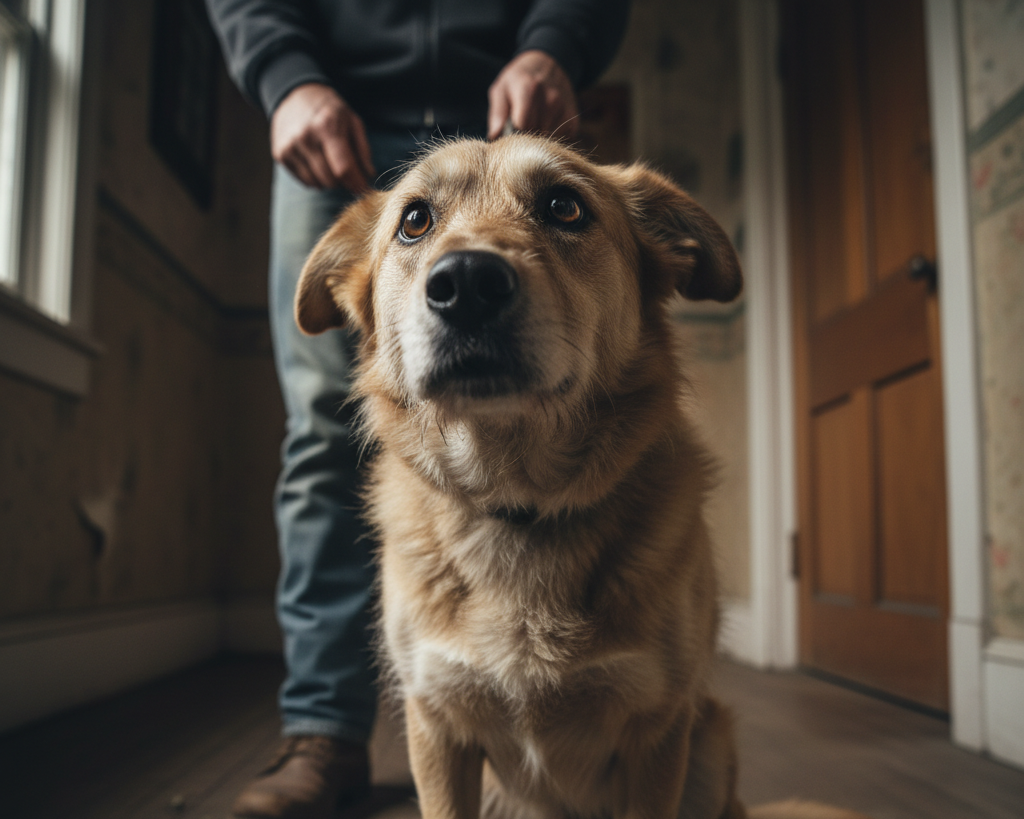
Dog separation anxiety causes profound distress for both dogs and their owners. Many people feel heartbroken and helpless when they hear their dog crying or return home to find destruction. Owners often worry they can never leave their dog alone, creating a stressful home environment.
This condition is more than just a little sadness when you leave. It is a genuine panic disorder, similar to a human panic attack. The dog is not “misbehaving” or acting out of spite. He is experiencing real fear and distress at being left alone.
Fortunately, you can manage and even resolve this issue with patience and consistent training. Understanding the signs and implementing gentle strategies can help your dog learn to feel safe. Helping your dog build confidence is the key to his well-being.
Tip: Start by leaving your dog for very short periods, even just 30 seconds. The goal is to return before he panics, teaching him that you always come back.
Recognizing the Signs: Common Dog Anxiety Symptoms
Dogs express anxiety in several ways. The most obvious signs are destructive behaviours, like chewing furniture or scratching at doors. You might also notice excessive barking, howling, or whining that starts soon after you leave. Some dogs may urinate or defecate indoors, even if they are perfectly house-trained. Drooling and panting excessively are also common dog anxiety symptoms.
Why Does My Dog Have Separation Anxiety?
Several factors can trigger canine separation distress. A major change in routine, such as a family member returning to the office, is a common cause. A move to a new house, even in a familiar part of a city like Pretoria, can be disorienting. The loss of a family member or another pet can also lead to anxiety. Some dogs adopted from shelters are more prone to this, fearing another abandonment.
Strategies for Managing Your Dog’s Anxiety
The primary goal is to teach your dog that being alone is not scary.
Create a “Safe Space”
Designate a comfortable area for your dog. A crate (if he is crate-trained) or a pen with a comfortable bed can be very effective. Give him a special, long-lasting chew or a puzzle toy only when you leave. This builds a positive association with your departure.
Change Your Departure Cues
Your dog learns to associate certain actions with your departure, like picking up your keys or putting on your shoes. These cues can trigger his anxiety. Practice doing these things without leaving. Pick up your keys and then sit on the sofa. Put your shoes on and walk to the kitchen. This desensitises him to your leaving routine.
The Role of Nutrition and Supplements
A balanced diet supports overall well-being, including mental health. For some dogs, natural calming supplements can provide extra support. These are not a “cure” but can help take the edge off his panic. They work best when combined with consistent behavioural training.
Interesting Fact: Dogs are poor generalisers. Your dog might be perfectly calm when you leave for work, but panic if you leave him at a friend’s house. He needs to learn that he is safe everywhere.
FAQs
1. Can dog separation anxiety be cured?
Yes, with patience and consistent training, most dogs can learn to manage or overcome their separation anxiety. Severe cases may require help from a professional vet or behaviourist.
2. Does crating my dog make anxiety worse?
It depends on the dog. If he was not properly crate-trained, being locked in a crate can worsen his panic. If he loves his crate as a safe den, it can be very helpful.
3. How long does it take to fix dog separation anxiety?
There is no set timeline. Some dogs show improvement in weeks, while others may take many months. Consistency is more important than speed.
4. Should I get another dog to help?
This is generally not recommended. Your dog’s anxiety is about your absence, not just being alone. In some cases, you may end up with two anxious dogs.
5. Does exercise help with managing your dog’s anxiety?
Yes, very much. A tired dog is often a calmer dog. A long walk or a vigorous play session before you leave can help reduce his excess energy and anxiety.
6. Is my dog angry at me for leaving?
No. Destructive behaviour or indoor soiling is a sign of panic, not spite. He is not capable of that kind of complex, premeditated “revenge.”
7. What should I do when I return home?
Keep greetings calm and brief for the first few minutes. Avoid big, emotional reunions, as this can reinforce the “tragedy” of your departure. Greet him calmly once he has settled down.
In Closing
Helping your dog with anxiety is a journey that requires patience, empathy, and consistency. By understanding the root of his fear and implementing positive training strategies, you can rebuild his confidence. Treating dog separation anxiety not only brings peace to your home but also deepens the bond of trust you share with him.


